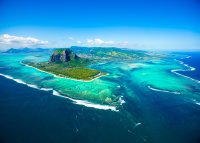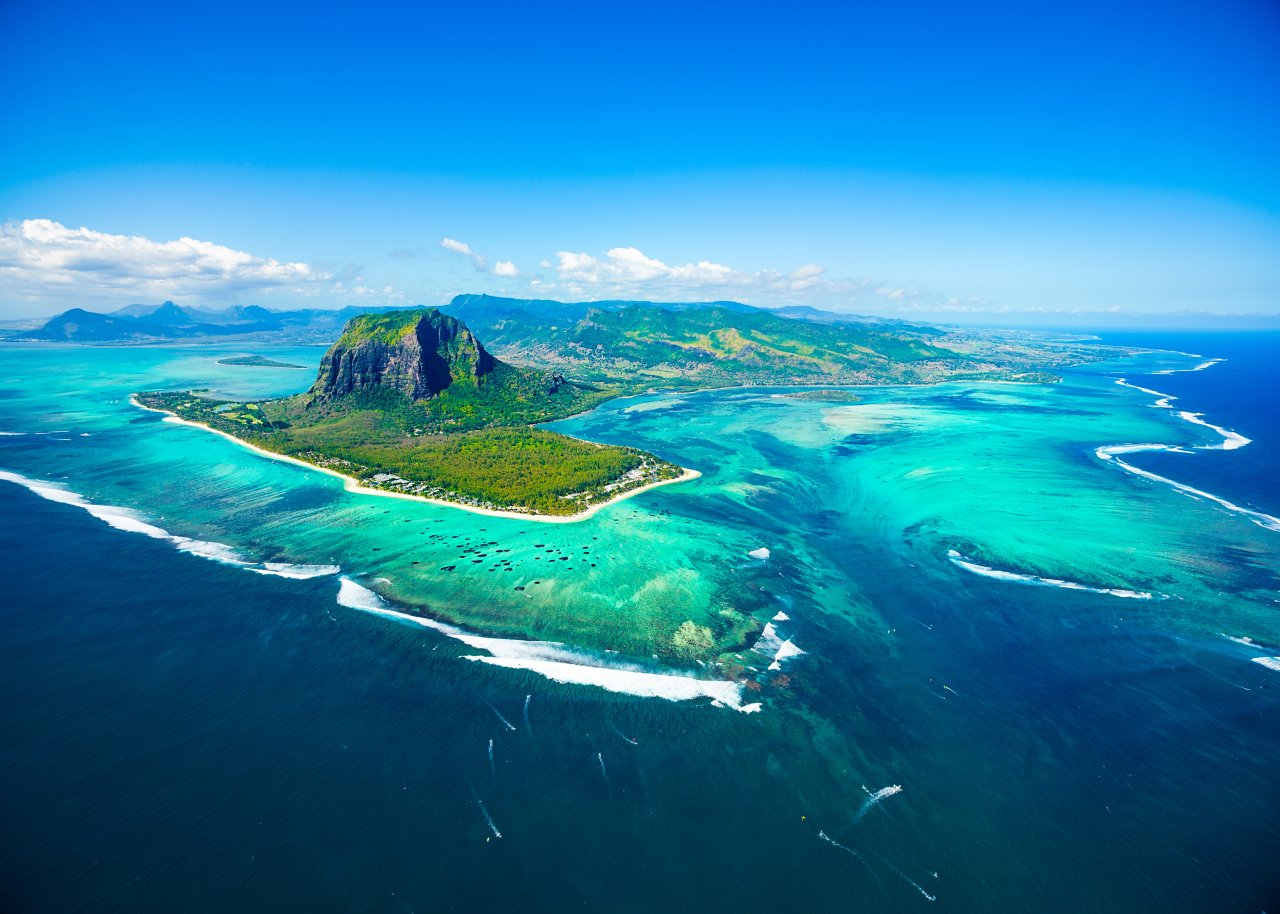The poor Mascarene ecosystems! Not only have they been hammered by man and his animal followers, but they’re riddled with invasive alien plants. Most of the animals and plants are species that have been introduced, and have subsequently run rampant to the detriment of indigenous flora and fauna.
Very prominent introductions include the filao (casuarina) tree (Casuarina equisetifolia), which often lines beaches and is useful as a windbreak. It originates in Malaysia. Great banyan trees (Ficus benghalensis) were brought from India, recognisable by their weird root systems dangling from their branches to the ground. Two distinctive Malagasy introductions are the flamboyant tree (Delonix regia) and the fan-shaped ravenala palm (Ravenala madagascariensis).
Privet and Chinese guava (goyavier) have spread at an alarming rate in the montane rainforests, often choking seedlings of slow-growing indigenous hardwoods. A horribly invasive bush is Lantana camara, the worst nightmare of conservationists. It is native to tropical America and has spread like wildfire in the Mascarenes.
Other tropical American invaders include sisal (Furcraea foetida), the morning glory creeper (Ipomoea purpurea), the prickly-pear cactus (Opuntia vulgaris) and the unmistakable poinsettia (Euphorbia pulcherrima).
In marshy areas, pampas grass (Cortaderia selloana), introduced from southeast Asia, is common. The originally Asian elephant ear (Colocasea esculenta) also frequents damp places. The staghorn fern (Platycerium bifurcatum), which one sees on so many rainforest trees, is actually Australian. Two of the most commonly used ornamentals, the bougainvillea (Bougainvillea glabra) and the frangipani (Plumeria alba), are tropical American species.
When the earlier settlers arrived in Mauritius, they introduced a selection of destructive animals, intentionally and by accident. A truly senseless introduction was the southeast Asian long-tailed macaque monkey (Macaca fasicularis), courtesy of the Dutch back in 1606. These primates are now abundant in Mauritius, where eradicating them is very difficult because Indo-Mauritians consider them sacred. They pose a very real threat to the endemic birds, reptiles, invertebrates and flora.
Wild pigs (Sus scrofra), of Asian origin, abound too, but are very secretive and wary. No doubt they don’t do terrestrial fauna much good, being the highly adaptable omnivores that they are, and are very destructive in native forests.
Brown rats and black rats arrived by means of ships and thoroughly invaded all the Mascarenes. Other introductions include the musk shrew, the black-naped hare (Lepus nigricollis) and the wild rabbit (Oryctolagus cuniculus), which was eradicated on Round Island after severely damaging the ecosystem there. The lesser Indian mongoose (Herpestes javanicus) is fairly often seen bolting across rural roads and was introduced in 1900 to reduce rats. It also munched its way through native bird populations.
Of the reptile introductions, the aggressive Indian wolf snake (Lycodon aulicus) is most often seen. We can only imagine what species this reptile wiped out while establishing itself in Mauritius, where it is now quite common.
Many birds have been introduced and those that established themselves are generally common and highly successful species. They are the birds you’ll see in hotel gardens, parks and towns. Sadly, where they have an endemic relative, they far outnumber that species; like the red-whiskered bulbul, an Asian introduction, which is numerous, while the endemic Mauritius bulbul is uncommon.
The aggressive Indian mynah is to be seen in any urban centre, as are the house sparrow and house crow. Also regularly seen and heard is the zebra dove. The ring-neck parakeet (Psittacula krameri) can be confused with its endangered, endemic relative, the echo parakeet. However, their calls differ and both sexes of the ring-neck have red beaks, whilst only female echoes have black beaks.
Three small passerines (an order of birds characterised by the perching habit) from Africa are the spotted-backed weaver, the common waxbill and the yellow-eyed canary, all of which are now abundant. The bright red Madagascar fody has colonised all the Mascarenes. Seeing this little bird is guaranteed, but to stand the best chance of seeing its rare native congener, the Mauritius fody, you will need to go to Ile aux Aigrettes.
Some of the introduced birds have been far less invasive and are actually quite interesting. The Meller’s duck (Anas melleri) is uncommon in its native Madagascar and is known to breed in Mauritius, where there are no other wild ducks or geese left. The common Indian francolin is present in grasslands and in sugarcane fields. More often seen is the Madagascar turtle dove.















